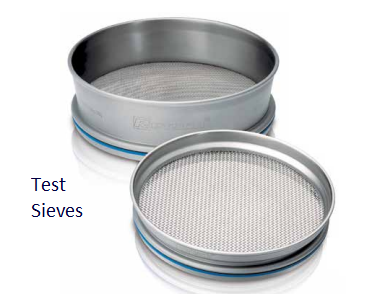Test Sieves
The demands made of particle size analysis are reflected in the requirements contained in the standard ISO 3310. In order to adapt our test sieves to these requirements, RETSCH has developed a unique manufacturing process that guarantees a previously unattained quality and consistency in sieve production(200 x 50 mm, 200 x 25 mm, 203 x 50 mm (8"x 2"), 203 x 25 mm (8"x 1")). In addition, a logistic manufacturing system makes it possible to record each and every material used in the process.
Application Examples
cement clinker, chemicals, coffee, construction materials, fertilizers, fillers, flours, grains, metals powders, minerals, nuts, plastics, sand, seeds, soils, washing powder, ...
Product Advantages
- one-piece sieve frame and fabric-transition without grooves prevent cross contamination (no sample residues etc.).
- no hollow spaces which need to be sealed (no epoxy)
- high degree of corrosion resistance and easy cleaning thanks to high-alloy stainless steels
- innovative tensioning technology guarantees permanently tight sieve fabric
- excellent product quality due to extensive optical inspection.
- maximum stability and optimum sealing when used in sieve stacks thanks to the o-ring which is placed in the recess designed for this purpose
- clear and precise labeling of the sieves with full traceability based on individualized laser engraving
Features
| Applications | separation, fractioning, particle size determination |
| Field of application | agriculture, biology, chemistry / plastics, construction materials, engineering / electronics, environment / recycling, food, geology / metallurgy, glass / ceramics, medicine / pharmaceuticals |
| Feed material | powders, bulk materials, suspensions |
Function Principle
Prior to delivery, each sieve is optically measured and granted a test report. On request, an inspection certificate with the measuring results in tabular and graphical form or a calibration certificate with detailed statistics is delivered. As a special service, we offer to recalibrate your test sieves. After the standard measuring process, all relevant data are recorded and confirmed in the calibration certificate, if desired.
Subject to technical modifications and errors

